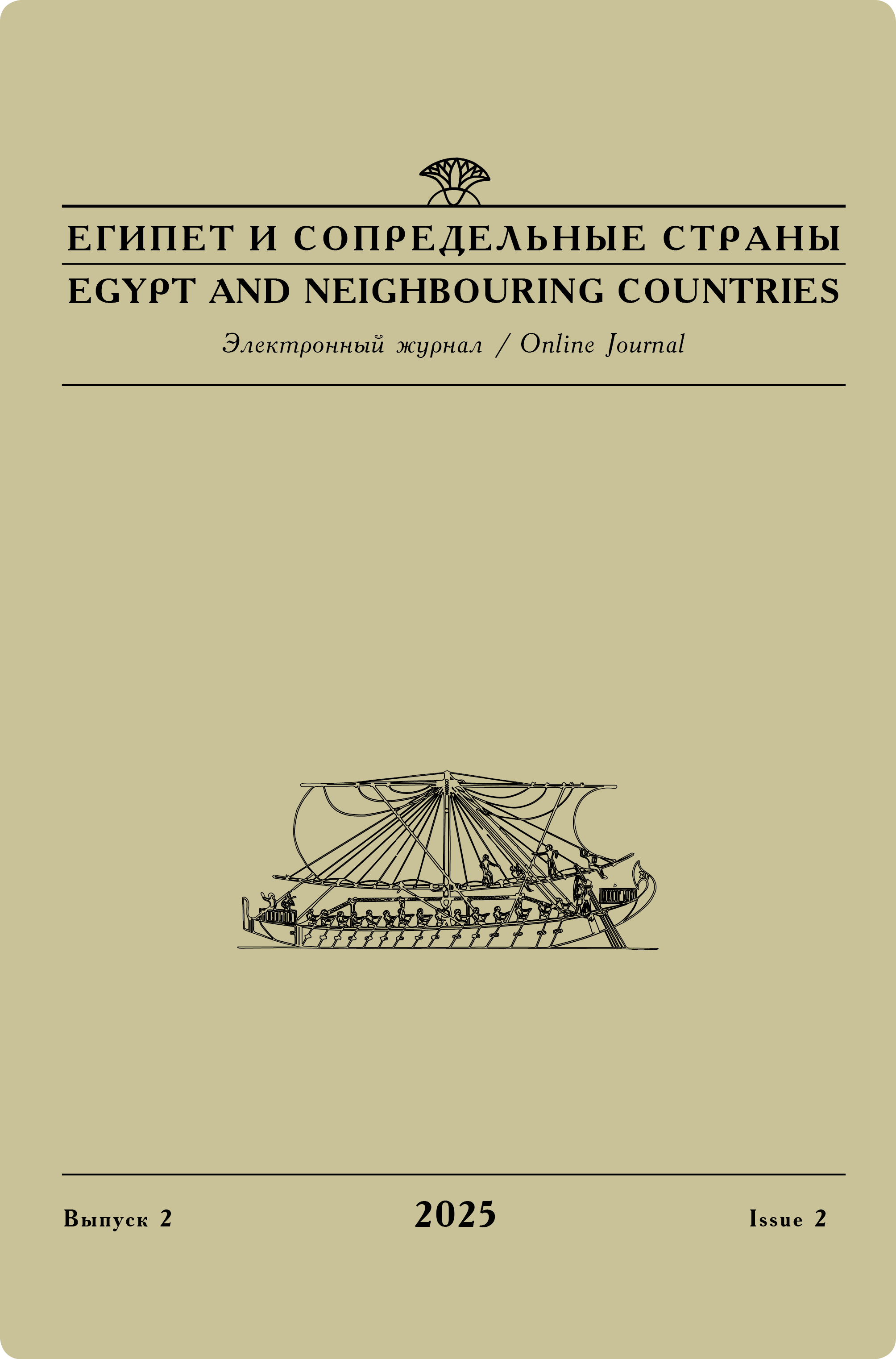Issue 3, 2021
O. V. Orfinskaya
Tekstil'nye tekhnologii Egipta: struktura tkanei [Textile technologies of Egypt: fabrics’ structure]
This paper presents results of analysis of three groups of textiles discovered by CES RAS archaeological mission to two Egyptian sites — TT 23 in Luxor and Deir el-Banat necropolis in Fayoum. Investigation covered 500 fragments from the tomb (first group), 276 fabrics from burials with naked bodies wrapped in bandages and other funeral textiles (second group) and 194 fragments from burials with bodies dressed in tunics and wrapped in shrouds (third group). Analysis showed the textile industry in Egypt to be rather conservative and technological features of fabrics of two first groups to be nearly identical. The third group differs from others. It includes not only linen textiles, which are more balanced here, but also wool fabrics with various characteristics. In all groups tabby-weave dominates. Such a form of tabby as basket is registered in the first and second groups. The first and third groups include terry fabrics. The fact that there is none of them in the second group does not indicate that they were not used in domestic context since terries are mostly matts that were not torn into bandages. Textiles of the third group demonstrates one more weave — serge. Although a number of studied objects is impressive, one should realize that this selection contains textiles used in funeral context and thus it does not reflect all assortment of Egyptian fabrics of the New Kingdom — late Byzantian period.
Keywords:
Egyptian textiles, fabrics, weaves, tabby, serge, basket, terry.
Original language — Russian.
DOI: 10.24412/2686-9276-2021-00017.
Referring: Orfinskaya O. V. Textile technologies of Egypt: fabrics’ structure [in Russian] // Egypt and neighbouring countries 3 (2021): 37–65. DOI: 10.24412/2686-9276-2021-00017.
Read full article




